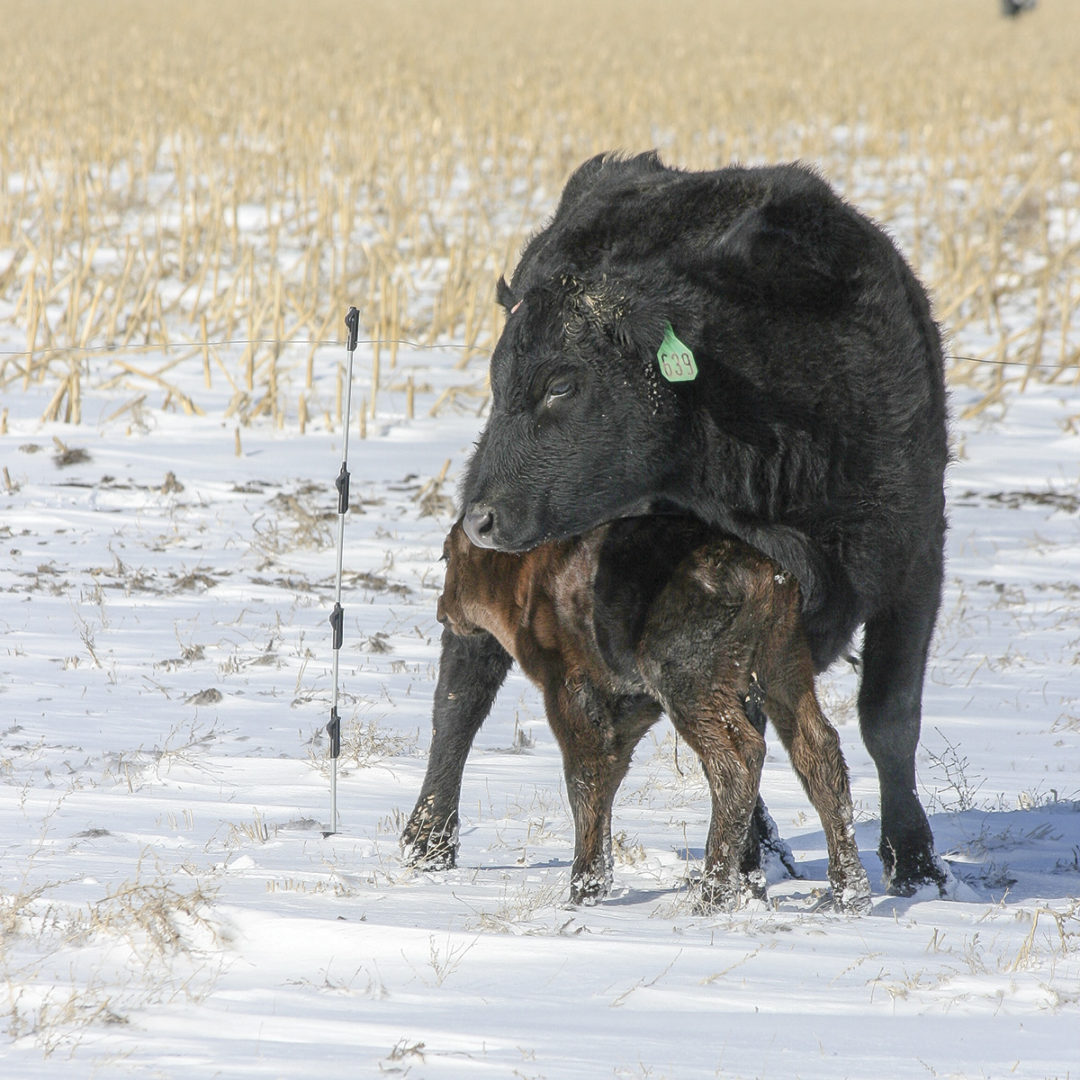The price of feedstuffs continues to be stubbornly high. Let’s review the fundamentals of supplementation and identify any unneeded supplements, which will help cut costs during the upcoming winter feeding season.
Your winter feed resource should dictate supplemental feeds used. If the forage base is warm-season grasses, the most limiting nutrient is protein. Nutritionists recommend feeding up to 1 pound of crude protein (CP) per cow per day when forage CP concentration is below 7%. Note that the recommendation is based upon pounds of CP, not the supplement. For example, if you are feeding a 20% range cube, cows will need up to 5 pounds of the supplement per head per day to meet the CP supplement needs. CP can be fed as little as two times per week. Just make sure you feed enough at each feeding to meet that daily requirement.
If you are raising cattle on cool-season forages, it is more likely that energy rather than protein is limited. As it is the dead of winter and many folks are feeding hay, it is crucial to have an idea of the hay’s quality. Estimating forage quality based on your eye or description provided by the person selling hay could lead to oversupplementation.
The other important piece of the supplementation puzzle is cow nutrient requirements. I like to use 7-9-11% CP and 55-60-65% total digestible nutrients (TDN) as my rules of thumb. We use TDN as a measure of energy in beef cow diets. These levels correspond to a mid-gestation, a late-gestation and a peak-lactation cow. For fall-calving herds, you are likely on the back side of peak lactation, and TDN requirements are closer to 60%. A scenario that concerns me is winter-calving cows fed hay into early winter. If your hay TDN is 48% to 52%, cows will be energy deficient going into the breeding season, which could delay getting pregnant with next year’s calf.
Ideally, beef cows calve at a body condition score (BCS) of 5 and maintain a BCS of 5 through the breeding season. Cows calving below a 5 BCS have a longer time interval before being ready to breed. Unfortunately, to stay on a 365-day calving interval, a cow must rebreed within 85 days of calving. Increasing postpartum interval by 20 to 30 days decreases chances of getting pregnant early in the following breeding season. Generally, a cow does not come open after one bad year. My experience with cows failing to rebreed is: They breed later each year for two to three years before they no longer line up with your defined breeding season. Keeping cows breeding early in the breeding season year-over-year is a hallmark of a successful cow-calf operation.
At the same time, I can understand the desire to cut feed costs this year. Try to identify unneeded supplementation and trim around the edges, rather than dipping into the body condition savings account. It is unprofitable to try and feed cows to increase BCS if they have already calved. Test your hay if you haven’t already, and feed the highest-quality feed (highest TDN percentage) to cows with the greatest nutrient requirements (winter-calving cows, in this case). Feeding supplements designed to provide supplemental protein are often not the most cost-effective source of supplemental TDN. Nor do they provide enough calories to meaningfully affect the energy status of a cow consuming a forage with more than 7% CP.
Ensure that if you are substituting feeds in or out of your supplement mix, you understand the differences in nutrient profiles. I like to index feeds by comparing the cost per pound of TDN. Despite its rapid price increase, corn is still the best deal per pound of TDN among concentrate feeds. Do not substitute corn out of supplement mixes unless it becomes more than 25% to 30% pricier than alternative supplements, such as soyhulls, gluten pellets or distillers grains. Remember, corn is not a protein supplement and should be mixed with a feed containing greater protein. However, a feed mix that is 80% corn and 20% dried distillers grains (DDGs) could be an alternative supplement. This mix will have roughly similar protein to a standard commodity mix, yet have greater energy (roughly 10% greater energy than traditional commodity mixes).
Following is an example on how to do the math on pricing feed per pound of TDN: Hay costs $45 per 1,000-pound bale and is 50% TDN. That’s 9 cents per pound of TDN. Convert price per bale or ton to price per pound, then divide by the percent TDN. Soyhulls cost $260 a ton and are 80% TDN. They cost 16.25 cents per pound of TDN.
I think the hole in the market this winter for energy supplements is either higher-quality forage or corn. If you could buy average-quality alfalfa for $160 a ton at 60% TDN, that is 13 cents per pound of TDN. It may sound strange, but buying higher-quality hay may be a better deal at this stage in the game than buying concentrates. Corn is currently 13 cents per pound of TDN at $6.50 per bushel. I do not see soyhulls, gluten and other byproduct feeds penciling on a cost per pound of TDN basis. Make sure you need to supplement using the guidelines above and price per pound of TDN when making supplement decisions.








